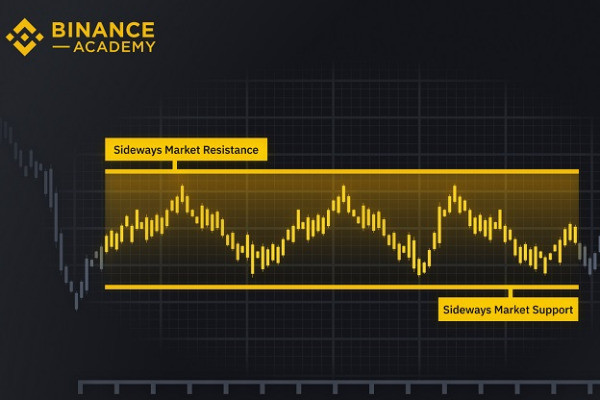The phrase Fully Diluted Valuation (FDV) has been heard a lot in the finance world, but it's possible that many people still don't know what it means in cryptocurrency and what it does.
To understand the tokenomics of a blockchain, almost all crypto investors will employ a variety of indicators. Trading Volume, Outstanding Supply, Maximum Supply, Market Capitalization, and Fully Diluted Valuation (FDV) are among the terms when it comes to analyzing tokens.

If all tokens are in circulation, the entire market cap is FDV. So alternatively, FDV can be defined as a project's market cap once the development team has released the maximum number of tokens.
Take an example from Bitcoin. If the whole supply of the cryptocurrency has been produced, the FDV represents the total value of the crypto at today's price. This method of capitalization assumes that future market cap will rise in proportion to the amount of supply available at a given point in time.
In a way, FDV is a method of calculating the market cap of a project in the future. FDV appears to be nearly identical to market cap at first glance, but there are several distinctions between the two measurements.
To comprehend the distinction between FDV and Market Cap, we must first comprehend market cap.
Defining Market Cap
The term "market capitalization" is frequently used to describe how popular and large cryptocurrencies are. A cryptocurrency with a larger market capitalization is often thought to be more popular. This is due to the high number of cryptocurrency in the market that is multiplied by its current price.
Higher cap cryptocurrencies are more likely to be more stable investments than assets with lower market cap. In addition, cryptocurrencies with lower market cap are more vulnerable to price fluctuations.
When comparing the magnitude of specific cryptocurrencies to alternatives or the market as a whole, the market cap is useful.
FDV Vs Market Cap
An instance of how to compute FDV and market cap is shown below to help clarify the differences between FDV and Marketcap.
The current market price of ABC coin is $1, while the total number of the coins mined and in circulation is 10 million. In the meantime, the total number of ABC coins that can be mined is set at 50 million.
As a result, ABC's market cap is: 10,000,000 million x $1 = $10,000,000
Meanwhile, the Fully Diluted Value (FDV) is: 50,000,000 X $1 = $40,000,000
Traders and other investors can assess the future possibilities of a crypto asset by understanding the entire worth of the crypto when all coins have been released, as well as the market cap.
How Can We Use FDV for Crypto Analysis?
After learning how to calculate and utilize FDV, it's natural to wonder how dependable it is when used as an assessment parameter. Essentially, the purpose of FDV is to determine whether a project's value is reasonable or not. When the total value of today's cryptocurrency is very high after all coins have been released, it signifies that there will be more tokens or coins in circulation. This can lead to a significant increase in inflationary pressure.
If the total worth of the cryptocurrency once all coins have been released is high, there are numerous aspects to consider: the release date for the next coin or token, the coin's future circulation, the token's predicted growth, and the impact of circulation in exchange for staking.
Nevertheless, there is a flaw with the FDV mechanism: the matrix ignores the potential of a reduction in token price with an increase in circulating supply. That is, FDV always assumes that a token's increasing supply will have no effect on its market price, therefore its future market cap will grow in proportion to its current circulating supply.
There are numerous more aspects that FDV overlooks when assessing a project's future market cap that can considerably boost or lower the platform's value. Some of them are future project developments, additions or departures from the core development team, developments made by competitors, project market significance in the future, and so on.
To summarize, FDV is not a very accurate statistic for evaluating cryptocurrency projects.
Fundamentals are not the only key components you should learn when it comes to crypto trading. There are also technical strategies to predict the price direction based on the previous price movements. One of them utilizes the famous price action.

 Dedicated FREE FOREX VPS
Dedicated FREE FOREX VPS Free FOREX Virtual Private Server
Free FOREX Virtual Private Server MT4 Demo Contest, Get $500
MT4 Demo Contest, Get $500 Sign Up for an Account, Claim 60% Deposit Bonus
Sign Up for an Account, Claim 60% Deposit Bonus Free MT4/MT5 VPS 2024
Free MT4/MT5 VPS 2024 Send E-mail and Get Free Merchandise
Send E-mail and Get Free Merchandise $1K Refer a Friend Bonus for Pepperstone Pro clients
$1K Refer a Friend Bonus for Pepperstone Pro clients Maximize Your Earnings with 100% Deposit bonus
Maximize Your Earnings with 100% Deposit bonus Trade to Win, $5,000 Monthly Demo Contest
Trade to Win, $5,000 Monthly Demo Contest Claim 30% + 15% Deposit Bonus from LiteFinance
Claim 30% + 15% Deposit Bonus from LiteFinance






 Bitcoin
Bitcoin Ethereum
Ethereum Tether
Tether BNB
BNB Solana
Solana USDC
USDC XRP
XRP Dogecoin
Dogecoin Toncoin
Toncoin Cardano
Cardano
1 Comment
Natasha Romanoff
Jun 20 2022
Very fascinating work, and it provides some new perspectives on crypto FDV. Using FDV, traders or investors can assess the potential worth of a crypto asset in the future by determining its total value after all coins have been minted as well as its market capitalization.
For the purpose of determining whether or not the value of a project can be considered reasonable. However, FDV is not a very accurate statistic to use when assessing crypto projects, which is sad.